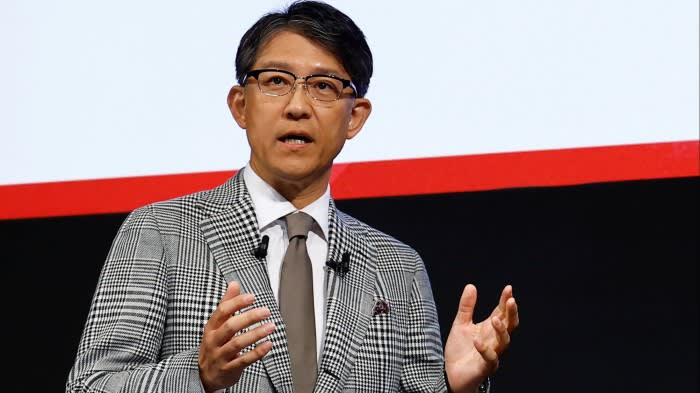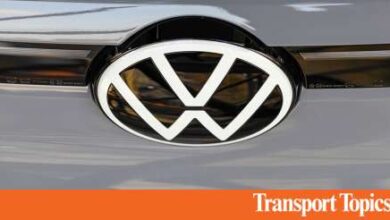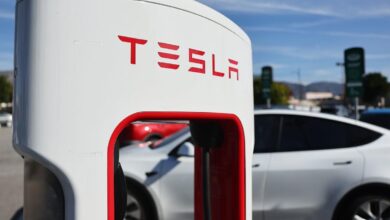Ford slashes work crew at F-150 Lightning plant in Dearborn
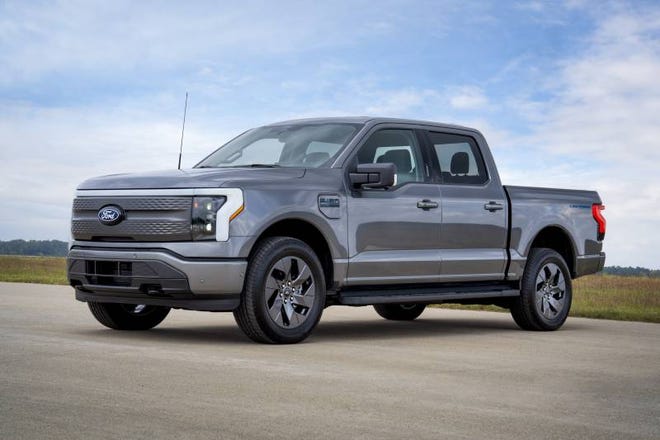
Ford Motor Co. is dramatically cutting the hourly workforce at the factory that builds the Ford F-150 Lightning starting next week, as the automaker slashes product targets of its all-electric pickup.
Of the 2,100 workers who make up three work crews at the Rouge Electric Vehicle Center in Dearborn, one third will remain on site after April 1, Ford spokeswoman Jessica Enoch told the Detroit Free Press on Wednesday. A crew of 700 will be transferred to the Michigan Assembly Plant in Wayne to build the Bronco and Ranger while the remaining 700 or so will either take the $50,000 retirement package negotiated during the 2023 contract talks or accept reassignment in southeast Michigan. Ford is adding a third crew at Michigan Assembly.
Enoch declined to confirm production volume details on Wednesday.
A year ago, Ford announced plans to hire more workers to ramp up Lightning production. Ford had been rotating their shifts since October, with layoffs built into the schedule, as the pace of electric vehicle sales slowed, Enoch noted.
New vehicles have been held for quality review since Feb. 9, with expected shipping to begin in April, Enoch said.
Todd Dunn, president of UAW Local 862 in Louisville, Kentucky, told members during his weekly video update released Tuesday that the labor union leaders are closely monitoring all activity involving battery-electric production as the industry continues to manage dynamic and often unpredictable change.
More:Ford F-150 Lightning owners aren’t like traditional pickup buyers: What they do differently
Battery tech affecting production plans
“The battery technology right now is kind of slowing some of the purchasing down. The REV Center, the Rouge Electric Vehicle Center, we call it REV-C, was ramping up their second crew. They’re now going to lay off that second crew and not put the third crew on,” Dunn said. “Their intentions were to build 180,000-plus units. Right now, we’re looking at 55,000 units they’re gonna build. There are some things out there that’s causing this — distance on (battery) charges, new technology that’s being brought about overseas, that technology being implemented over there already in certain design models. It’s also showing almost double in mileage, if not a significant increase. So some of those things are changing.”
He added, “We’re staying right on top of things, the way we should.”
Dunn mentioned in the video that he was offered a position with the UAW world headquarters in Detroit but declined. He is often part of strategy meetings and updates involving plants all around the country and union business overall because the Kentucky Truck Plant is the most profitable in the company.

Dunn, whose members build the Ford Super Duty at the Kentucky Truck Plant as well the Ford Expedition and Lincoln Navigator, also represents members at the Louisville Assembly Plant building the Lincoln Corsair. Dunn led nearly 9,000 workers out on strike in October during contract talks.
More:Ford chief engineer wins coveted NACTOY award for second time
Also Tuesday, Ford Chief Financial Officer John Lawler said during a talk at the Bank of America Securities Auto Summit that the Dearborn automaker is constantly making adjustments to purchasing decisions to address market changes. Ford’s electric vehicle strategy assumes brutal competition, radical change and rethinking how things have been done in the recent past and even now, Lawler said.
“We definitely need to work to match capacity with demand. Demand is much slower than the industry expected when it comes to EVs,” he said. “We are right-sizing our capacity and the investments that we’re putting into EVs. but it’s not a matter of ‘if,’ it’s a matter of ‘when.’ I think we’re in the transition between the early adopters who were much more willing to deal with some of the ancillary items that come with EVs — charging range and things like that. We’re moving into the early majority. And the early majority is much less forgiving, and pricing is an issue.”
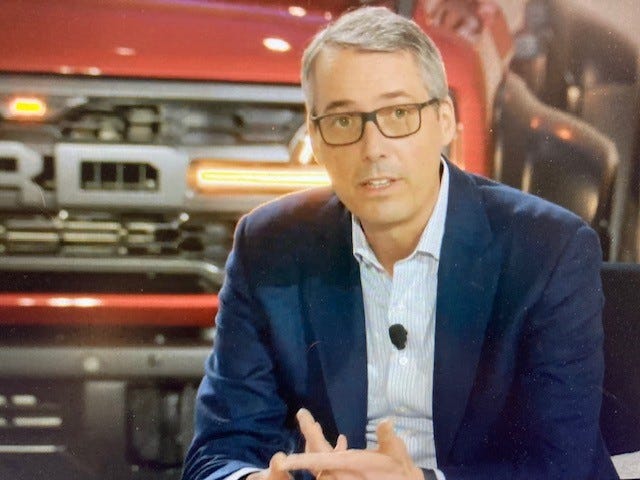
Changes to battery technology, which allow for longer driving distances, are key to adoption for many potential buyers. And that’s something Ford and its competitors are monitoring in this early mass-adoption period.
“The bigger the vehicle, the bigger the battery. And the battery is the most expensive thing in the vehicle. And then the bigger the battery, the more weight. The more battery you need, the less efficient the vehicle is,” Lawler said. “So the costs just spiral out of control.”
He added, “The EV business, Model e, has to stand on its own. It has to get there.”
More:Ford F-Series’ sales dominance is ‘incredibly powerful American symbol’
No one will be forced to drive an electric vehicle
While Ford has said it’s developing a small electric vehicle to compete with Chinese automakers and Tesla, Lawler declined to confirm a 2025 launch date. Too many variables are under review, he said.
Ford CEO Jim Farley has said the automaker has no plans to abandon its internal combustion engine vehicles but will diversify its offerings to consumers. Ford currently builds the top-selling trucks across gas, hybrid and electric propulsion systems. Both the F-150 hybrid and Maverick hybrid are strong sellers.
“We are taking advantage of our manufacturing flexibility to offer customers choices while balancing our growth and profitability,” Farley said in a news release in January. “We see a bright future for electric vehicles for specific consumers, especially with our upcoming digitally advanced EVs and access to Tesla’s charging network.”
Contact Phoebe Wall Howard: 313-618-1034 or phoward@freepress.com. Follow her on X @phoebesaid.
